I. OBJECTIVES OF CERTIFICATION TRAINING
|
California – Bruce Eldridge, University of California, Davis
Florida – Thomas Loyless, Florida Department of Agriculture and Consumer Services Georgia – Paul Guillebeau, Georgia Cooperative Extension Service Hawaii – George Kitaguchi, Hawaii Department of Health Louisiana – Lamar Meek, Louisiana State University Michigan – Carolyn Randall, Michigan State University Extension Service Missouri – Flernoy Jones, University of Missouri Cooperative Extension Service Nebraska – Clyde Ogg, Nebraska Cooperative Extension Service Nevada – Wayne Johnson, Nevada Cooperative Extension Service New Jersey – Christine Musa, Warren County Mosquito Control New York – Ronald Gardner, Cornell Cooperative Extension Service North Carolina – Barry Engber, North Carolina Department of Environmental and Natural Resources Ohio – Richard Berry, Ohio Department of Health Oklahoma – Jim Criswell, Oklahoma Cooperative Extension Service Texas – Jimmy Olson, Texas A&M University Utah – Clark Burgess, Utah Department of Agriculture and Food Washington – Carol Ramsay, Washington State University Cooperative Extension Service Centers for Disease Control – Chester Moore, Division Vector Borne Infectious Diseases; Janet McAllister, Division Parasitic Diseases Department of Defense – Donald Driggers, Armed Forces Pest Management Board Environmental Protection Agency – Robert Rose, Training and Certification Division |
|
Deanna Branscome, Department of Entomology and Nematology, University of Florida Gary Clark, Centers for Disease Control and Prevention Alan Curtis, Indian River Mosquito Control, Vero Beach Florida Richard Davis, Vector-borne Diseases Section, California Department of Health Services Jessica Dewey, Wildlife Services, APHIS, USDA George Edwards, Department of Plant Industry, Florida Department of Agriculture and Consumer Services Durland Fish, Department of Epidemiology & Public Health, Yale School of Medicine Nancy Hinkle, University of California, Riverside Jerome Hogsette, Agricultural Research Service, USDA Robert Novak, Illinois Natural History Survey, Champaign, Illinois Jimmy Olson, Department of Entomology, Texas A&M University Ray Parsons, Harris County (Texas) Mosquito Control Pamela Reynolds, New Mexico Environmental Department M. Thomas Sanford, Department of Entomology and Nematology, University of Florida Clay W. Scherer, Department of Entomology and Nematology, University of Florida |
|
Herbert Bolton – United States Navy, Department of Defense Pest Management Board Jonathan Day – University of Florida, Florida Medical Entomology Laboratory Thomas Dean – University of Florida, Pesticide Information Office Eugene Gerberg – University of Florida, Entomology and Nematology Department Thomas Loyless – Florida Department of Agriculture and Consumer Services James Robinson – Pasco County (Florida) Mosquito Control Robert Rose – Environmental Protection Agency, Certification and Worker Protection Branch |
| California | Pesticide Applications and Safety Training for Applicators of Public Health Pesticides. Mosquito and Vector Control Association of California. 88 pp. |
| Florida | Public Health Pest Control Applicator Training Manual. Florida Department of Agriculture and Consumer Services. 1998. 30 pp.
Imported Fire Ants and Their Management in Florida. SP 161. University of Florida. 1994. 20 pp. |
| Georgia | Public Health Pest Control. University of Georgia Cooperative Extension Service. 1993. 51 pp. |
| Hawaii | Vector Control Training Manual. Hawaii State Department of Health. 1991. 127 pp. |
| Louisiana | Mosquito Control Training Manual. Commercial Pesticide Applicator. Category 8A – Mosquito Control. Louisiana Mosquito Control Association. 1993. 119 pp. |
| Michigan | General Pest Management, A Guide for Commercial Applicators. Extension Bulletin E-2048. Michigan State University Extension. 1998. 231 pp.
Public Health Pest Management. Extension Bulletin E-2049. Michigan State University Cooperative Extension Service. 139 pp. |
| Minnesota | Category L, Mosquito. Pesticide Applicator Training Manual. University of Minnesota Extension Service. 2000. 98 pp. |
| Missouri | Public Health Pest Control Manual 98. University of Missouri – Columbia Extension Service. 1989. 35 pp. |
| Nebraska | Public Health Pest Control for the Commercial/Noncommercial Pesticide Applicator. University of Nebraska Cooperative Extension. 76 pp. |
| Nevada | Nevada Pesticide Applicator's Certification Workbook. SP-87-7. University of Nevada Cooperative Extension. 1997. 194 pp. |
| New Jersey | Pesticide Applicator Training, Category 8B, Mosquito Pest Control. Rutgers Cooperative Extension. 1998. 52 pp.
Commercial Pesticide Operator Training Manual. Warren County Mosquito Extermination Commission. 1994. 18 pp. |
| New York | Pesticide Applicator Training Manual, Category 8, Public Health Pest Control. Cornell University Cooperative Extension. 1983. 175 pp. |
| Ohio | Mosquito Pest Management. Bull. 641. Ohio State University Extension. 1998. 11 pp. |
| Texas | Using Pesticides, Commercial Applicator Manual, Health-Related Pest Control. Texas Agricultural Extension Service. 1977. 30 pp. |
| Utah | Public Health Pest Control, Pesticide Application and Safety Training Study Guide. Utah Department of Agriculture. 1996. 21 pp. |
| Washington | Public Health Pest Control. Washington State Cooperative Extension Service. 42 pp. |
| Federal | Guidelines for Arbovirus Surveillance in the United States. U.S. Department of Health and Human Services. 1993. 83 pp.
Introduction to Arthropods of Public Health Importance, HEW Publ. (CDC) 79-8139. U.S. Department of Health, Education and Welfare. 1979. 48 pp. Military Pest Management Handbook. Chapter 7. Medically Important Arthropods. Defense Pest Management Information Analysis Center. 1992. 67 pp. Mosquito Handbook. A Guide to Identification and Management. Tennessee Valley Authority. 29 pp. Mosquitoes of Public Health Importance and Their Control. Vector-Borne Disease Control Self Study Course 3013-G. U.S. Department of Health and Human Services. 1993. 85 pp. Mosquitoes: Their Biology and Control (An IPM Approach). National Park Service, National Capital Region, 1980. 49 pp. (unpublished pamphlet) Pictorial Keys. Arthropods, Reptiles, Birds and Mammals of Public Health Importance. U.S. Department of Health and Human Services. 1994. 192 pp. Tick-borne Diseases: Vector Surveillance and Control. Defense Pest Management Information Analysis Center. 1998. 74 pp. Venomous Arthropod Handbook. Envenomization, Symptoms/Treatment, Identification and Control. U.S. Air Force School of Aerospace Medicine. 1977. 49 pp. |
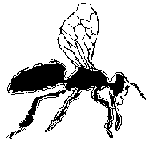 |
|
Principal classes of arthropods are:
|
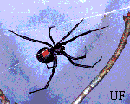 |
| 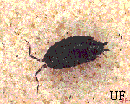 |
|  |
| 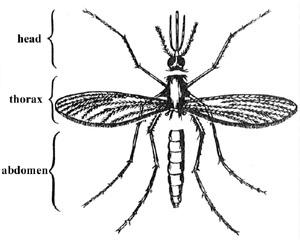 |
- Simple metamorphosis. This group, which includes silverfish, makes no drastic change in form from juvenile to adult. Its members simply hatch and grow larger by molting periodically. Only a few insect orders are included in this group.
- Gradual metamorphosis. This group includes cockroaches, crickets, grasshoppers, boxelder bugs, earwigs and more, which hatch from eggs as nymphs that resemble the adult form but do not have wings. Some of the orders have many species and include many pests. Nymphs and adults are often found together and usually eat the same food.
- Complete metamorphosis. Insects that develop by complete metamorphosis undergo a complete change in appearance from juvenile to adult. Insect species that undergo complete metamorphosis number more than all of the other species in the entire animal kingdom! This group includes mosquitoes, flies, fleas, beetles, moths, butterflies, ants, bees and wasps.
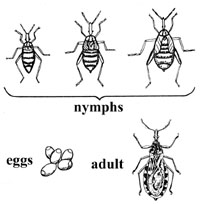 |
|
 |

University of Florida and the American Mosquito Control Association
Public Health Pest Control WWW site at http://entomology.ifas.ufl.edu/fasulo/vector/
Return to Public Health Pest Control Menu
http://entomology.ifas.ufl.edu/fasulo/vector/